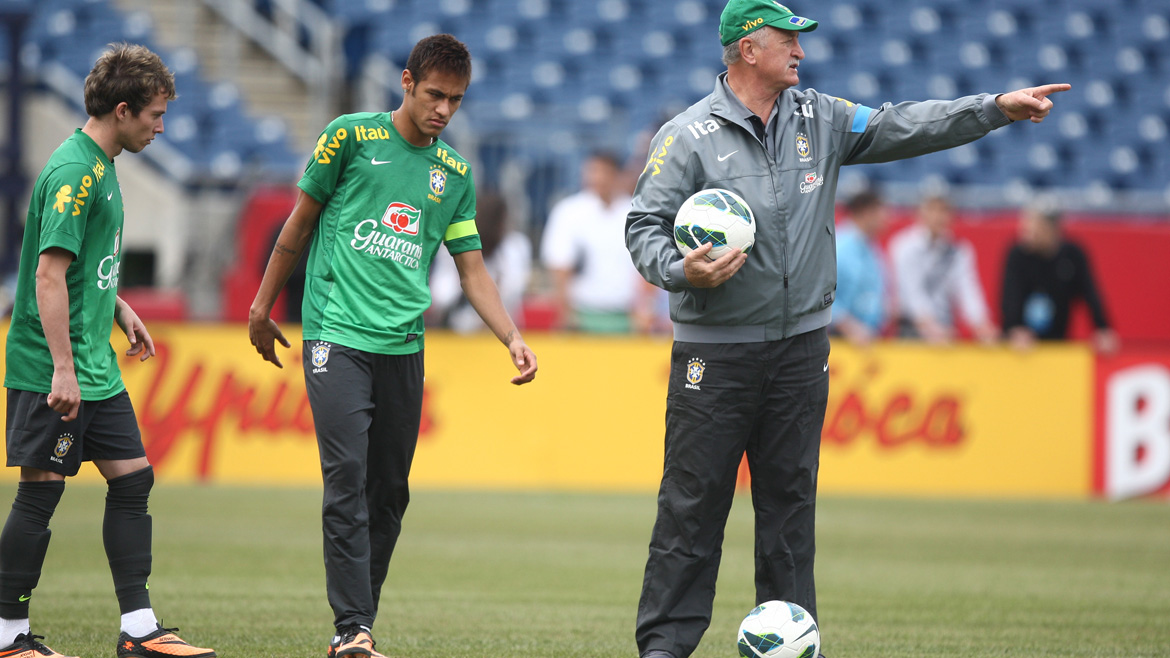
Por: Inside The World Cup
Luiz Felipe Scolari has made the hosts harder to beat, but they will rely heavily on the creativity of Oscar and Neymar, and the solidity of Thiago Silva and Chelsea’s David Luiz at the back
This article is part of the Guardian’s World Cup 2014 Experts’ Network, a co-operation between 32 of the best media organisations from the countries who have qualified for the finals in Brazil. theguardian.com is running previews from four countries each day in the run-up to the tournament kicking off on 12 June.
There were hints of irony in Brazil’s demolition of Spain last June in the Confederations Cup final. First, after dismissing his predecessor’s Guardiola-induced experiences, the Brazil manager Luiz Felipe Scolari witnessed vindication of his theory that tiki-taka could be dismantled. Second, the 3-0 drubbing came in the same season Barcelona had been blown out of the water by Bayern Munich, the team Big Phil had more than publicly professed his admiration for: he actually resorted to adapting gegenpressen to his own needs.
It worked: since taking over the Seleção in November 2012, Scolari has only lost two out of 20 games. Differently from his previous stint from 2001 to 2002, where he could rely upon more experienced players, including defenders who could play in a line of three in order to better accommodate the talents of Rivaldo, Ronaldinho and Ronaldo, this time Scolari needed to handle a side where Neymar is the unmistakable focus of attention.
On paper, Brazil play on a 4-2-3-1 formation, but the most interesting feature is the intensity and commitment they have shown to smother opposition when not in possession of the ball. Although the Seleção use only two proper centre-backs, Thiago Silva and David Luiz, the former Bayern man Luiz Gustavo, now with Wolfsburg, often sits back as a sweeper, although his presence in midfield to cover for Paulinho’s advances are greatly appreciated too. Oscar and Neymar are the architects of creativity up front, with Hulk usually deployed as a mixture of battering ram, lethal left foot and someone who can track back and help steal the ball and close the spaces Brazil’s marauding full-backs (Dani Alves specifically) will invariably leave.
The former Lyon striker Fred is the man Scolari has wanted to act as a No9 since the beginning. The Fluminense striker repaid the manager’s faith by scoring five goals in the Confederations Cup, but a string of niggling injuries means he has played only once for the Seleção since June, which means Neymar is the focal point. The Barcelona forward’s deployment on the left side of the pitch is the more obvious solution but Scolari could still use Neymar as a second striker, even though he looks a bit more predictable and vulnerable there.
Brazil have scored 54 goals since Scolari’s return, averaging 2.7 goals per game while conceding 15 (0.75 per game). They have kept 10 clean sheets including in games against France and Spain.Scolari inherited a side struggling with inexperience and expectations under his predecessor, Mano Menezes, and turned them into a force to be reckoned with in the World Cup, especially after getting supporters excited once again.
Who is the Brazil player who is going to surprise everyone at the World Cup?
Paulinho. His first season at Spurs was better than many people gave him credit for and he is a crucial player for Brazil. He can do the defensive dirty work, but it is his forays further up the pitch to augment the forwards that could be a vital ingredient for the hosts.
Who is the player who is going to disappoint the most?
Neymar, if he doesn’t challenge for Golden Boot and/or Brazil don’t win. As unfair as it sounds those are the standards that are set for a player on whose young shoulders much of the nation’s hopes rest.
What is the realistic aim for your team at the World Cup and why?
Winning it. Because nothing else will leave the fans happy. Welcome to Brazil!
